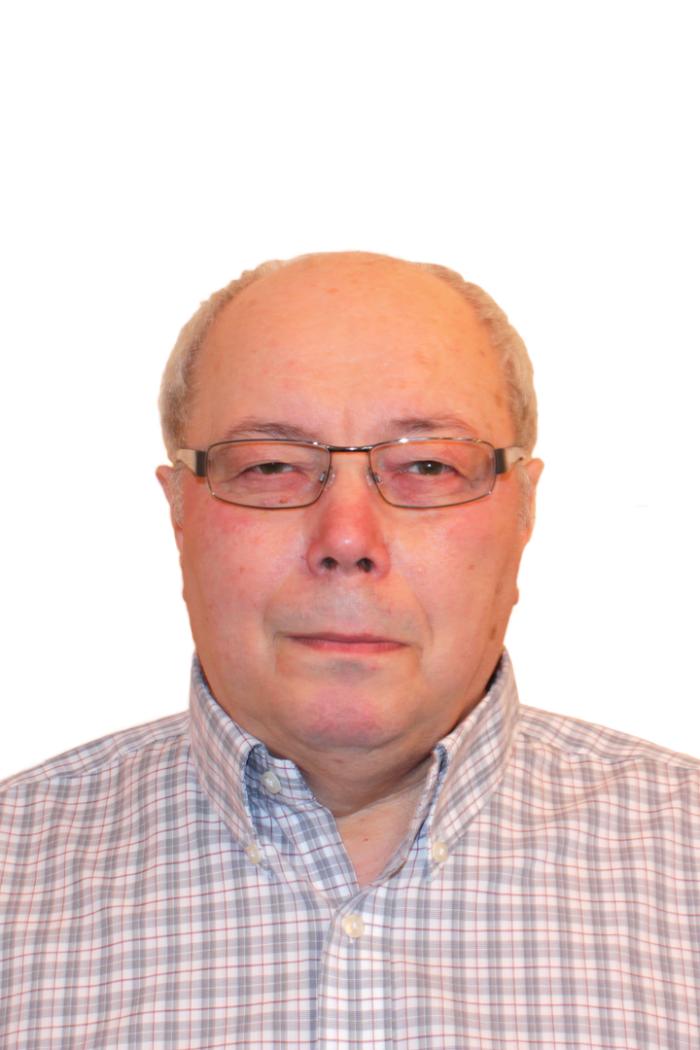Igor Strakovsky

Igor Strakovsky
Research Professor of Physics
Adjunct & Research
Contact:
Dr. Igor Strakovsky is an experimentalist in fundamental nuclear and particle physics. He received a doctoral degree from the Petersburg Nuclear Physics Institute (PNPI) in 1984 and worked as a research scientist at PNPI before joining the Physics Department at Virginia Tech in 1992, and then the Physics Department at The George Washington University in 1997. He has been a full research professor there since 2009. Since 2022, he is a Honorary Research Fellow of the School of Physics and Astronomy of Glasgow University, UK.
At Virginia Tech, Igor Strakovsky joined the PWA group under Dick Arndt's leadership. Since that time, he has conducted research at TRIUMF, Canada; MAX-lab, Sweden; Juelich FZ and Mainz U., Germany; BNL and JLab, USA. His research centers on hadronic and electromagnetic physics and nuclear structure. Currently, his main experimental focus is on Jefferson Lab, and he is on the PIs of GW's Jefferson Lab Group. In particular, Dr. Strakovsky is a co-spokesperson of the K-Long Facility (KLF) project. KLF can provide a link to understanding the formation of our universe within several microseconds after the Big Bang.
Igor Strakovsky is an author of well over 300 papers published in peer-reviewed journals with over 16,000 citations and an h-index of 50. He has authored books: ``Modern Muon Physics: Selected Issues'' and ``Neutrino Mass: Past, Present, and Future,'' and is a Regional Award Winner and one of the 15 national Finalists for The 2008 Inspire Integrity Awards of the National Society of Collegiate Scholars' (NSCS) Inspire Integrity Awards, USA. The Particle Data Group (PDG) acknowledges GWU's SAID Group as "the Partial-Wave Analysis source to go to."
NN and N3 Interactions, edited by L.D. Blokhintsev and I.I. Strakovsky, (Nova Science, 2014).
The Universe Evolution: Astrophysical and Nuclear Aspects, edited by I.I. Strakovsky and L.D. Blokhintsev (Nova Science, 2013).
W.J. Briscoe, M. Doring, H. Haberzettl, M. Manley, M. Naruki, I.I. Strakovsky, and E. Swanson, Physics opportunities with meson beams, Eur. Phys. J. A 51, 129 (2015)
M.C. Kunkel, M.J. Amaryan, I.I. Strakovsky, J. Ritman, G.R. Goldstein et al. (CLAS Collaboration), Exclusive photoproduction of pi0 up to large values of Mandelstam variables s, t, and u with CLAS, Phys. Rev. C 98, 015207 (2018)
P.T. Mattione, D.S. Carman, I.I. Strakovsky, R.L.Workman et al. (CLAS Collaboration), Differential cross section measurements of gamm n-->pi0 p above the first nucleon resonance region, Phys. Rev. C 96, 035204 (2017)
H. Al Ghoul et al. (GlueX Collaboration), Measurement of the beam asymmetry Sigma for pi0 and eta photoproduction on the proton at E = 9 GeV, Phys. Rev. C 95, 042201(R) (2017)
I.I. Strakovsky, S. Prakhov, Ya.I. Azimov et al. (A2 Collaboration at MAMI), Photoproduction of the omega meson of the proton near threshold, Phys. Rev. C 91, 045207 (2015)
P. Adlarson et al. (A2 Collaboration at MAMI), Measurement of pi0 photoproduction on the proton at the MAMI-C energy range, Phys. Rev. C 92, 024617 (2015)
M.J. Amaryan, G. Gavalian, C. Nepali, M.V. Polyakov, Ya. Azimov, W.J. Briscoe, G.E. Dodge, C.E. Hyde, F. Klein, V. Kuznetsov, I. Strakovsky, and J. Zhang, Observation of a narrow structure in p(gamma;Ks)X via interference with phi-meson production, Phys. Rev. C 85, 035209 (2012)
Y. Qiang, Ya.I. Azimov, I.I. Strakovsky, W.J. Briscoe, H. Gao, D.W. Higinbotham, and V.V. Nelyubin, Properties of the resonance Lambda(1520) as seen in the forward electroproduction, Phys. Lett. B 694, 123{128 (2010)
R.A. Arndt, W.J. Briscoe, M.W. Paris, I.I. Strakovsky, and R.L. Workman, Baryon resonance analysis from SAID, Chinese Phys. C 33, 1063 (2009)
Intermediate Laboratory (Phys 2151W)
University Physics II (Phys 1022)
General Physics II (Phys 1012)
Nuclear Physics (PHYS 233)
University Physics I (PHYS 1021)
PhD in Experimental Nuclear Physics, Petersburg Nuclear Physics Institute, St. Petersburg, Russia, 1984
MS in Experimental Nuclear Physics, St. Petersburg State Polytechnic Univ., St. Petersburg, Russia, 1969
BA in Physics, St. Petersburg State Polytechnic University, St. Petersburg, Russia, 1965

